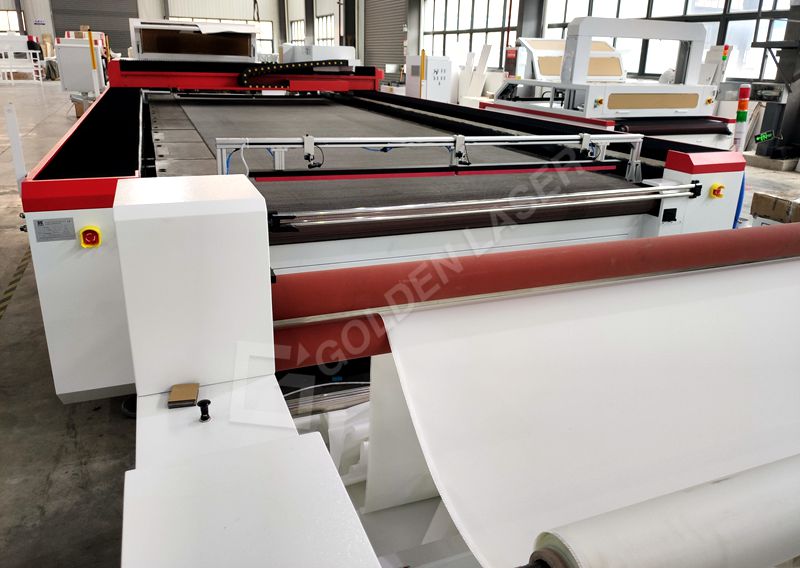How Laser Cutting Technology is Revolutionizing the Textile Industry
The textile industry is one of the most ancient and largest industries in the world. It employs millions of people and generates billions of dollars in revenue each year. However, with the advent of technology, this industry is rapidly changing. One of the most significant changes is the increased use of fabric laser cutting automation.
The textile industry has long been plagued by problems related to labor costs. This is because it takes a lot of time and money to hire, train and maintain workers who are skilled enough for the job. With fabric laser cutting automation, these costs can be greatly reduced or eliminated entirely. In addition, this process results in less waste material being produced during fabrication because there is no need for human hands. Another benefit of using fabric lasers instead of traditional methods like knives or scissors is that they create smaller pieces which means less overall waste material at the end product stage as well as increased safety precautions throughout production facilities where this technology may be used regularly.
Nowadays, textile manufacturers are able to use automated machines which can produce nearly perfect results every single time without requiring any human intervention whatsoever! The textile industry is rapidly undergoing a transformation to become more efficient and effective. With fabric laser cutting automation, the precision of cut textiles has increased, as well as quality control and production speed. Learn how technology advancements in the textile industry are revolutionizing traditional processes like manual fabrication cutting to streamline manufacturing cycles.
In a textile factory, the laser cutter is typically used to cut patterns and shapes out of different types of fabrics. The process of fabric laser cutting automation has been around for many years; however, recent technological advancements have made this process much more efficient. In particular, the use of CO2 lasers has revolutionized how textiles are cut. CO2 laser cutting machines emit high-energy light beams that can quickly and accurately cut through materials like fabric. This technology is especially beneficial for the textile industry because it allows manufacturers to produce higher quality products in a shorter amount of time. Additionally, by automating the cutting process, factories are able to reduce labor costs and improve workplace safety.
What are the advantages of using fabric laser cutting automation?
The trend of fabric laser cutting automation is rapidly growing in the textile industry. This technology has many advantages over traditional methods like manual fabrication cutting. With fabric laser cutting automation, the precision of cut textiles increases, quality control improves, and production speed speeds up.
One of the primary advantages of using fabric laser cutting automation is the precision it offers. The automated process results in a much cleaner and neater edge on the textile than what can be achieved with traditional methods. In addition, automated systems provide greater consistency in terms of cut quality from one product to the next. This leads to improved overall product quality and a reduction in the number of defective items produced. Thanks to laser cutting, the fabric is guaranteed to be cut to the correct size. This is especially useful for industries with high-end products where even small deviations can make a difference in quality.
Another benefit of fabric laser cutting automation is that it helps to speed up production cycles. With traditional methods, it can take a long time to cut all the pieces required for a product. However, with an automated system, this process is significantly streamlined. As a result, products can be produced more quickly and in greater quantities.
The third benefit associated with this technology includes an improved level of safety for workers due to the elimination of blade contact used in textile cutting processes. Automated systems can also be programmed to follow specific instructions such as not cutting certain parts of the fabric or only using certain types of lasers depending on what’s being cut out at that time which helps reduce human error even further!
The fourth benefit involves less waste and more efficiency because there’s no manual labor involved so they can create precise cuts with accuracy without wasting any materials along the way like you would if someone were doing it by hand instead – this means less money spent on things like scrap materials too! In addition, laser cutting machines use up less energy than other methods due to better design which saves companies money over time while still providing quality results every single day.
The fifth benefit is the use of lasers instead of blades, which means they don't need to be sharpened or replaced as often, and while this laser technology requires some initial cost savings compared to traditional methods such as blade cutting, it pays off in the long run as there is no need to continue buying blades or sharpening, which can be expensive over time.
Sixthly, lasers are able to cut through thicker materials more easily than other types of machines making for less labor required when working with these fabrics since they don’t have any trouble cutting through heavy-duty stuff like Kevlar for tactical gear and technical fabrics for heat and flame resistance!
In short, the trend of fabric laser cutting automation is revolutionizing traditional methods like manual fabrication cutting. This technology offers many advantages, including increased precision, improved quality control, and faster production cycles. If you're looking for a way to improve your textile manufacturing process, then this is definitely the technology to consider.
Laser Cut Textiles: How It Works?
When a laser is used to cut fabric, it heats up an exact area of material until vaporization occurs. This eliminates any kind of fraying or raveling that may occur when fabric scissors are used.
The laser also causes minimal damage to materials, as it is extremely precise, and makes no physical contact with the surface of the material being cut.
For this reason, lasers are often preferred over manual cutting methods such as scissors or die-cutting machines. This allows for more complex textile patterns to be cut, as well as higher precision in fabric production.
For laser cutting of fabrics, it is usually used to cut single layers. However, for certain special industries and materials, such as automotive airbags, the laser allows for the cutting of multiple layers of material (10 layers only 20 layers) in one pass and the ability to make continuous cuts directly from rolls of multi-layer material. This makes it a fast and efficient method for mass-produced fabrics using laser cutting of textiles.
Traditional Fabric Cutting Methods: What Is Being Replaced?
Traditional methods of fabric cutting, such as scissors and die-cutting machines, are no longer able to keep up with the demands of the textile industry.
This is due to a number of factors: first, traditional methods are not precise enough for modern day textiles. Secondly, manual fabrication cutting is often very slow, making it difficult to keep up with increased demand for fabrics.
Finally, the quality control of manually cut textiles is not as effective as it could be with laser cutting automation. This can result in defects or other problems that manufacturers would want to avoid if possible through technology advancements like fabric laser cutting machines.
Conclusion
In conclusion, the trend of fabric laser cutting automation is revolutionizing the textile industry. With the many benefits that this technology offers, it is clear to see why so many manufacturers are making the switch. If you're looking for a more efficient and precise way to produce fabrics, then fabric laser cutting automation may be right for you. Contact us today to learn more!






